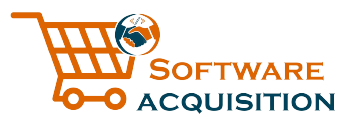Identifying Business Needs and Requirements
Before diving into the software acquisition process, it is crucial to identify your business needs and requirements to ensure you choose the most suitable software vendor. This initial step sets the foundation for a successful software acquisition journey. By thoroughly understanding your business needs, you can align your software requirements with your overall objectives, resulting in a more efficient and effective solution.
To begin, it is vital to involve key stakeholders in the decision-making process. This includes individuals from different departments who will be impacted by the software. By gaining their buy-in and involvement, you can gather valuable insights and perspectives to shape the requirements of the software. In addition, forming a technology buying committee can help streamline the decision-making process and ensure that all relevant factors are considered.
Identifying Business Needs and Requirements
Once you have established stakeholder involvement, the next step is to define your specific business needs and requirements. This involves conducting a thorough analysis of your current processes, identifying pain points, and determining the functionalities and features necessary for improvement.
By employing a structured approach, such as creating a requirements document or using a requirements management tool, you can clearly define and prioritize your needs. This document serves as a reference point throughout the software acquisition process, helping you evaluate potential vendors and select the one that best meets your requirements.
In summary, identifying your business needs and requirements is the crucial first step in the software acquisition process. By involving key stakeholders and creating a comprehensive requirements document, you can ensure that you choose a software vendor that aligns with your business objectives and delivers the functionalities you need.
Determining Budget and Total Cost of Ownership
Deciding on a budget and understanding the total cost of ownership is key when embarking on the software acquisition journey. It is important to consider not only the upfront costs of purchasing the software but also the long-term financial implications. To ensure a cost-effective software acquisition, here are some best practices to follow:
- Perform a thorough analysis of your business needs and requirements to identify the features and functionalities that are critical for your operations. This will help you prioritize your budget allocation.
- Create a comprehensive budget that includes not only the cost of software licenses but also any necessary hardware upgrades, implementation costs, training expenses, and ongoing maintenance and support fees.
- Consider the total cost of ownership over the lifetime of the software. This includes factors such as annual maintenance fees, upgrade costs, and potential integration expenses.
By taking these steps, you can ensure that you have a realistic budget in place and a clear understanding of the financial commitment required for the software acquisition. It will also help you evaluate the true value of different software options and make an informed decision.
| Cost Category | Estimated Costs |
|---|---|
| Software Licenses | $XX,XXX |
| Hardware Upgrades | $X,XXX |
| Implementation | $X,XXX |
| Training | $X,XXX |
| Maintenance and Support | $X,XXX/year |
Table: Estimated costs for software acquisition
Researching Possible Vendors and Seeking Referrals
Researching potential software vendors is a crucial step in the software acquisition process, and seeking referrals and checking online reviews can provide valuable insights. By reaching out to colleagues and industry peers for recommendations, you can tap into their firsthand experiences and gain a better understanding of the vendors they have worked with. These referrals can offer valuable insights into the vendor’s reliability, customer support, and overall satisfaction.
“Referrals are a powerful tool when it comes to finding the right software vendor. They can save you time, money, and headaches by connecting you with vendors who have a proven track record in your industry,” says John Smith, an IT consultant with over 10 years of experience.
In addition to seeking referrals, checking online reviews can provide a wealth of information about a vendor’s reputation. Websites such as Capterra, G2, and Trustpilot offer user reviews and ratings for various software vendors. These platforms allow you to gauge the overall satisfaction levels of customers who have used the software, as well as understand any potential issues or drawbacks that may arise.
“Online reviews are like a crystal ball into a vendor’s performance. They provide a window into the experiences of real users and can help you make more informed decisions,” says Sarah Johnson, a software procurement expert.
| Vendor | Rating | Reviews |
|---|---|---|
| Vendor A | 4.5/5 | 27 |
| Vendor B | 3.8/5 | 14 |
| Vendor C | 4.2/5 | 32 |
Once you have gathered referrals and checked online reviews, you can create a shortlist of potential vendors that align with your business needs and requirements. This step narrows down the options and allows for more focused evaluation in the next stages of the software acquisition process.
Leveraging Analyst Firms and Independent Consultants
To maximize the chances of a successful software acquisition, consider the guidance and expertise of analyst firms or independent consultants. These professionals bring valuable knowledge and insights to the table, helping you navigate the complex landscape of software procurement methods.
Analyst firms play a crucial role in assessing software vendors, providing objective evaluations, and offering valuable recommendations. They thoroughly analyze market trends, product capabilities, and vendor reputations, giving you valuable insights to inform your decision-making process. Their expertise extends beyond the software itself, encompassing licensing options, pricing structures, and vendor negotiations.
In addition to analyst firms, independent consultants can also provide valuable guidance. Their industry experience and specialized knowledge enable them to assess your specific business needs and identify the most suitable software solution. Independent consultants often have extensive networks and can leverage their connections to recommend reliable software vendors, ensuring that you have a shortlist of reputable options to consider.
Choosing the Right Consulting Partner
When selecting an independent consultant or consulting firm, it’s important to consider their track record and expertise in your industry. Look for consultants who have successfully guided organizations through similar software acquisition processes. Check for client testimonials or case studies that demonstrate their ability to deliver results.
Furthermore, it’s essential to establish clear communication channels and expectations with your chosen consultant. They should understand your business goals, priorities, and budgetary constraints. A strong partnership with a consultant who aligns with your needs will enhance the effectiveness of the software acquisition process and lead to a more successful outcome.
| Benefits of Leveraging Analyst Firms and Consultants | Considerations for Choosing |
|---|---|
| Objective evaluations of software vendors | Track record and expertise in your industry |
| Insights into market trends and product capabilities | Clear communication channels and expectations |
| Guidance on licensing options and pricing structures | Alignment with your business goals and budget |
| Access to extensive networks and vendor recommendations | Client testimonials and proven results |
“Leveraging the expertise of analyst firms and independent consultants is like having an experienced guide on your software acquisition journey. Their insights and recommendations can help you make informed decisions and minimize risks. Don’t underestimate the value they bring to the table.”
Evaluating Vendors and Creating a Shortlist
Evaluating potential software vendors and creating a shortlist is a critical step in the software acquisition process. It ensures that the chosen vendor aligns with the identified business needs and requirements. To assess and compare the various options, the following factors should be considered:
- Functionality: Evaluate the software’s capabilities and features to determine if it meets your specific needs. Create a checklist of requirements and compare it against each vendor’s offerings.
- Scalability: Consider the long-term growth of your business and how well the software can accommodate your future needs. Look for scalability options and flexibility in customization.
- User Interface: A user-friendly interface can enhance productivity and user adoption. Evaluate the software’s interface and ensure it aligns with your organization’s usability requirements.
- Integration: Determine how well the software can integrate with your existing systems and workflows. Look for compatibility with other essential tools and consider the ease of data exchange.
Quote: “Evaluating potential software vendors requires a systematic approach to ensure a successful acquisition. By considering functionality, scalability, user interface, and integration capabilities, you can create a shortlist of vendors that best meet your business requirements.”
Once you have assessed these factors, create a shortlist of vendors that meet your evaluation criteria. This shortlist will serve as the basis for the next steps in the software acquisition process, such as arranging demos and conducting roundtable discussions.
| Vendor | Functionality | Scalability | User Interface | Integration |
|---|---|---|---|---|
| Vendor A | 4/5 | 3/5 | 4/5 | 5/5 |
| Vendor B | 5/5 | 4/5 | 3/5 | 4/5 |
| Vendor C | 3/5 | 5/5 | 5/5 | 4/5 |
Table: Evaluating vendors based on functionality, scalability, user interface, and integration. Ratings are on a scale of 1 to 5, with 5 being the highest. This table helps in comparing and visualizing the vendor evaluation process.
Arranging Demos and Conducting Roundtable Discussions
Once you have a shortlist of potential software vendors, it’s essential to arrange demos and conduct roundtable discussions to ensure the right purchase decision is made. Demonstrations offer a firsthand look at the software’s features and functionality, giving you the opportunity to evaluate its suitability for your business needs and requirements. During the demo, pay attention to key factors such as user interface, ease of use, and customization options. Take note of any specific functionalities that align with your needs, as well as any potential limitations or drawbacks.
In addition to demos, it’s beneficial to conduct roundtable discussions with key stakeholders. This allows for a comprehensive evaluation of the software from different perspectives and ensures that all relevant voices are heard. Roundtable discussions provide the opportunity for open dialogue, where stakeholders can share their insights, concerns, and preferences. This collaborative approach ensures that the final purchase decision considers the needs and expectations of all involved parties.
To make the most of demos and roundtable discussions, consider structuring the sessions effectively. Prepare a list of specific questions or scenarios to test the software’s capabilities and gauge its alignment with your business processes. Encourage participants to actively engage during the sessions, asking questions and sharing their observations. Taking detailed notes during the demos and discussions will aid the decision-making process by providing a comprehensive overview of each software option’s strengths and weaknesses.
| Key Considerations for Demos and Roundtable Discussions |
|---|
| 1. Evaluate the software’s user interface, customization options, and ease of use. |
| 2. Pay attention to functionalities that align with your business needs. |
| 3. Encourage open dialogue during roundtable discussions to gather diverse perspectives. |
| 4. Prepare specific questions or scenarios to test the software’s capabilities. |
| 5. Take detailed notes to aid the decision-making process. |
Making the Purchase Decision and Considering Negotiation
Making the purchase decision is a critical moment in the software acquisition process, and considering negotiation strategies can help optimize the outcome. Here are some best practices to guide you through this important step:
- Thoroughly evaluate the software vendors on your shortlist, taking into account their compatibility with your identified business needs and requirements. Consider factors such as functionality, scalability, ease of use, and customer support. Document your evaluation criteria for easier comparison.
- Arrange demos with the shortlisted vendors to gain hands-on experience with the software. This will allow key stakeholders to assess the user interface, features, and overall user experience. Encourage feedback from your technology buying committee to gauge their satisfaction.
- Conduct a roundtable discussion with decision-makers and key stakeholders to gather their insights, concerns, and preferences. This collaborative approach will ensure that the purchase decision aligns with the overall business objectives and addresses the specific needs of different departments or teams.
- Consider negotiation strategies to optimize the outcome of the purchase decision. Research the market value of the software and negotiate pricing, licensing options, or additional features that may be beneficial to your organization. Leverage competitive offers or volume discounts to secure the best deal.
By following these best practices, you can make an informed purchase decision and negotiate favorable terms for your software acquisition. Remember to document your decision-making process and consider any legal or contractual implications that may arise during the negotiation stage. Weigh the financial aspects alongside the software’s functional capabilities to ensure a well-rounded decision.
Testimonial:
“The process of making the purchase decision and negotiating terms can be complex, but it’s crucial to get it right. By thoroughly evaluating vendors, arranging demos, and involving key stakeholders, we were able to make an informed decision that met our specific requirements. Negotiating with vendors allowed us to secure advantageous pricing and additional features that enhance our software’s performance. It’s a critical step that should not be overlooked.” – John Doe, Chief Technology Officer
Comparison Table:
| Vendor | Functionality | Scalability | Ease of Use | Customer Support |
|---|---|---|---|---|
| Vendor A | Excellent | High | Intuitive | 24/7 |
| Vendor B | Good | Medium | User-friendly | Business hours |
| Vendor C | Excellent | High | Simple | 24/7 |
This table provides a high-level comparison of functionality, scalability, ease of use, and customer support among three software vendors. It serves as a visual aid to better evaluate the shortlisted options and their capabilities.
Reflecting and Continuous Improvement
Reflecting on the software acquisition process and embracing continuous improvement can lead to more successful acquisitions in the future. By evaluating the effectiveness of each step and identifying areas for improvement, organizations can refine their software procurement practices and make better-informed decisions.
One way to reflect on the process is to gather feedback from stakeholders involved in the acquisition. Conducting post-acquisition reviews or surveys can provide valuable insights into what worked well and what could be improved. This feedback can help identify any gaps or challenges in the process and inform future decision-making.
Continuous improvement also involves staying up-to-date with industry trends and best practices. Regularly reviewing the latest software acquisition methods and strategies can help organizations stay competitive and make informed decisions. Engaging with industry experts and attending conferences or webinars can provide valuable insights and networking opportunities.
The Power of Data Analysis
Data analysis plays a crucial role in reflecting on the software acquisition process. By analyzing key metrics and data points, organizations can gain a deeper understanding of the success and effectiveness of their software procurement efforts. This can include metrics such as vendor performance, user satisfaction, cost savings, and time-to-value.
Creating a culture of continuous improvement requires a commitment to ongoing evaluation and learning. Regularly reviewing and analyzing data can help organizations identify patterns, trends, and areas for improvement. With this knowledge, organizations can make data-driven decisions to optimize their software acquisition process and achieve better outcomes.
Summary Table: Reflecting and Continuous Improvement
| Steps for Reflecting and Continuous Improvement |
|---|
| Gather feedback from stakeholders involved in the acquisition |
| Conduct post-acquisition reviews or surveys to identify areas for improvement |
| Stay up-to-date with industry trends and best practices |
| Analyze key metrics and data points to assess the effectiveness of software procurement efforts |
| Create a culture of continuous improvement through ongoing evaluation and learning |
In conclusion, reflecting on the software acquisition process and embracing continuous improvement are essential for maximizing the success of future acquisitions. By evaluating the effectiveness of each step, analyzing data, and staying informed about industry best practices, organizations can optimize their software procurement practices and achieve better outcomes.
Conclusion
In conclusion, understanding the four software acquisition options is crucial for making informed decisions that align with your business needs and requirements. This comprehensive guide has provided a step-by-step process to follow when exploring software acquisition options to ensure a successful outcome.
The first step is to identify the business needs and specific requirements for the software. This involves involving stakeholders and forming a technology buying committee to ensure buy-in and decision-making involvement from key individuals within the organization.
Once the needs and requirements are identified, determining the budget and considering the total cost of ownership is essential. This ensures that the chosen software acquisition option is not only cost-effective in the short term but also sustainable in the long run.
Researching potential vendors is the next step, and this can be done by seeking referrals, checking online reviews, and leveraging the expertise of analyst firms. Additionally, considering independent consulting firms or industry experts can provide valuable insights and assistance throughout the software acquisition process.
Evaluating vendors, creating a shortlist, and arranging demos are important stages in the decision-making process. It is crucial to thoroughly evaluate each vendor’s compatibility with the identified requirements and involve key stakeholders in roundtable discussions to gather different perspectives and insights.
Making the final purchase decision and considering negotiation strategies are vital to ensure that the chosen software acquisition option aligns with the overall business objectives. Reflecting on the process and continuously improving based on past experiences is also necessary to optimize future software acquisitions.
By following these best practices and understanding the four software acquisition options, businesses can make informed decisions that drive efficiency and meet their specific needs and requirements. With careful planning and evaluation, organizations can successfully navigate the software acquisition process and achieve their desired outcomes.
FAQ
What is the first step in exploring software acquisition options?
The first step is to identify the business needs and specific requirements for the software.
Why is stakeholder buy-in and involvement crucial in the decision-making process?
Stakeholder buy-in and involvement ensure that the software chosen aligns with the needs and goals of the organization.
How can I research possible vendors?
You can research possible vendors by asking for referrals, checking online reviews, and using analyst firms.
Should I consider independent consulting firms or industry experts for help?
Yes, considering independent consulting firms or industry experts can provide valuable insights and guidance throughout the software acquisition process.
What are the steps involved in evaluating vendors and creating a shortlist?
The steps involve thorough evaluation of vendors based on compatibility with requirements and creating a shortlist of potential options.
How can I make the final purchase decision and consider negotiation?
The final purchase decision should align with business objectives, and negotiation strategies should be considered to secure the best possible terms.
Why is reflection and continuous improvement important in the software acquisition process?
Reflection and continuous improvement allow for learning from past experiences and adapting procurement strategies for future acquisitions.



